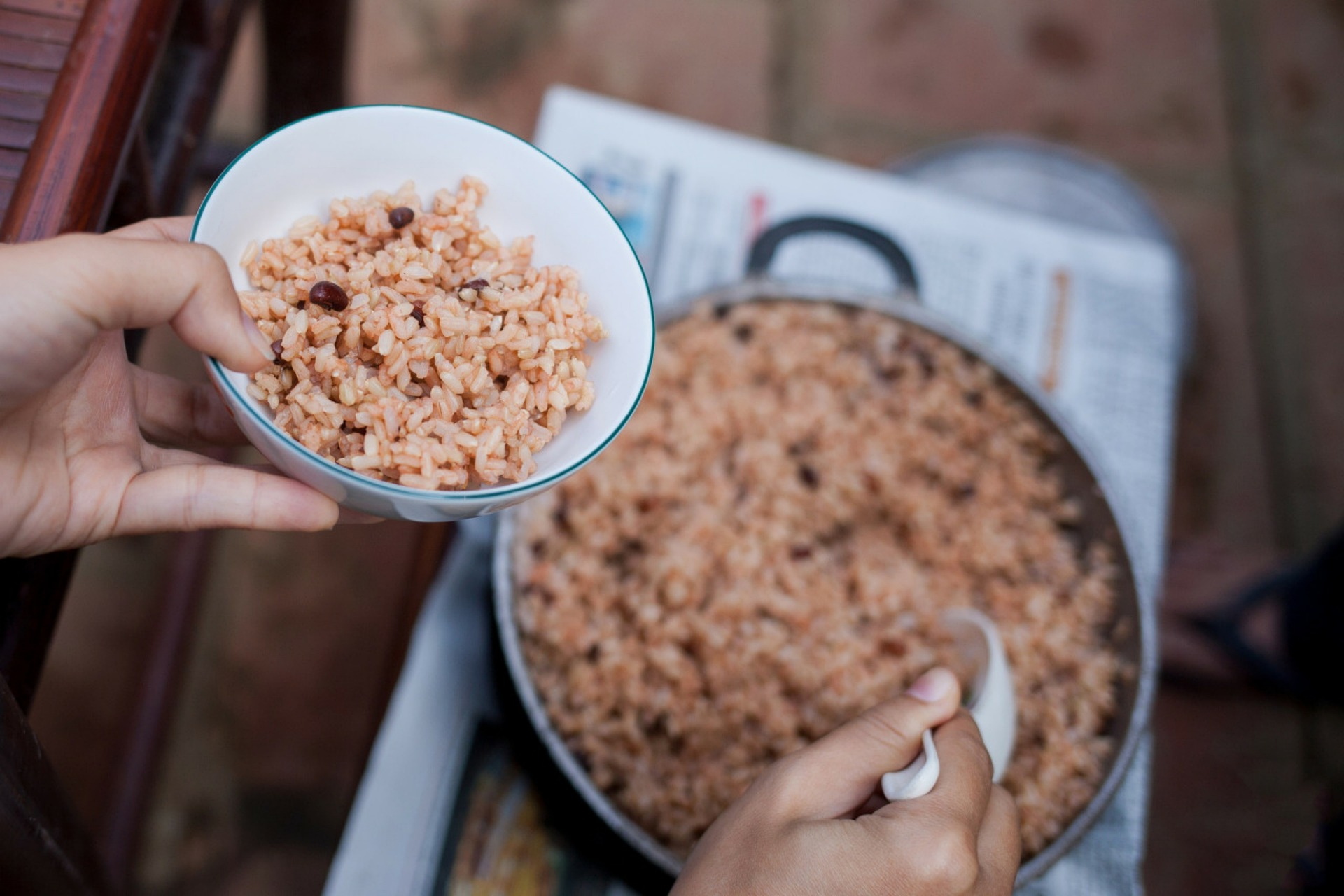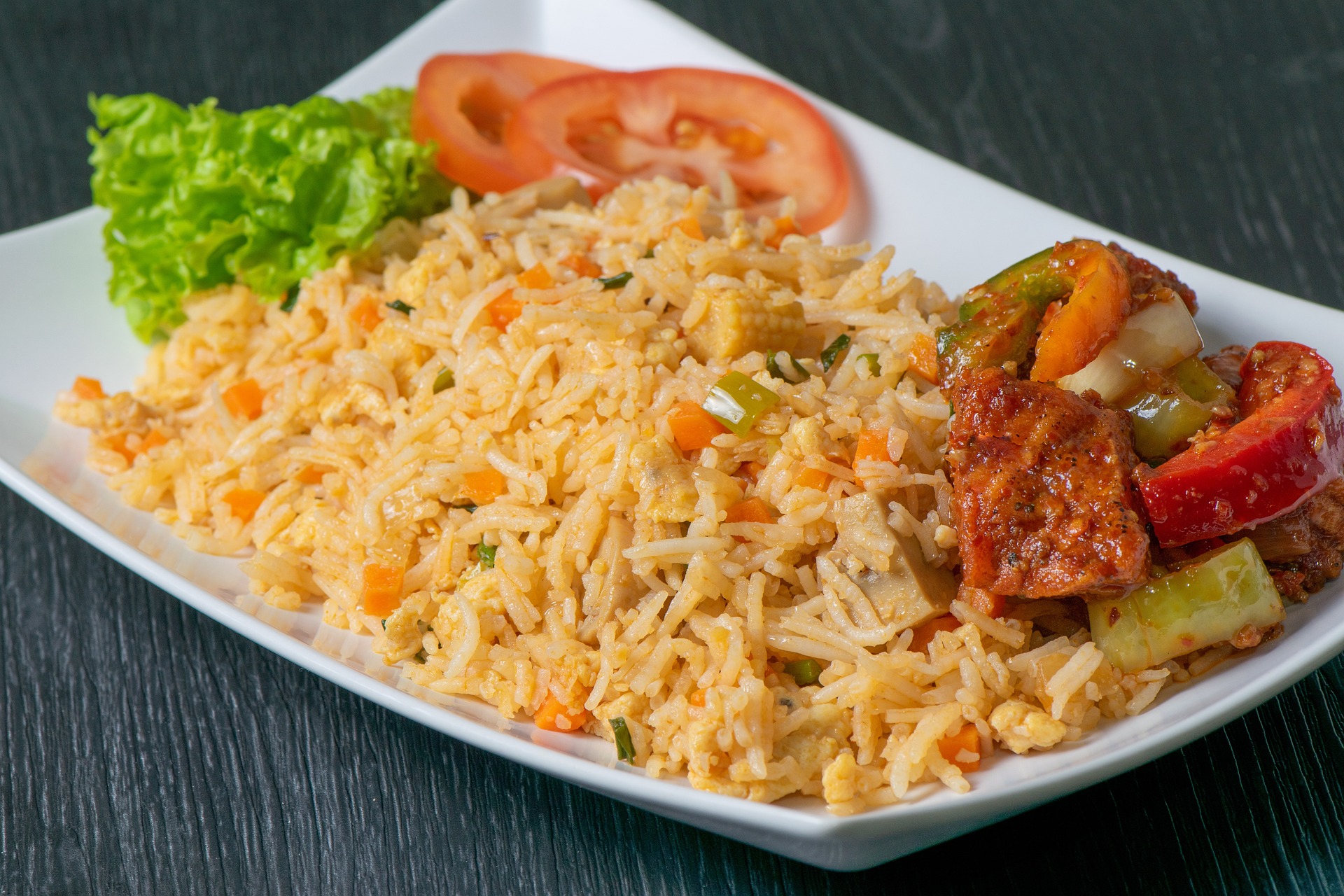Reheating rice is a great way to enjoy delicious rice without cooking it. However, there are a few tips to help you know whether it is safe to reheat it in the microwave, oven, or stove.
A question that many people ask is, “is it safe to reheat rice to eat?” While reheating rice is not a bad idea, you should follow safety precautions to ensure that your rice is fresh and safe to consume.
One of the best things to do is to take the time to properly cool your rice before reheating it. This will reduce the risk of bacteria growth, which can be a major cause of food poisoning.
The most obvious way to cool your rice is to put it in a large, airtight container and chill it in the refrigerator. The NHS recommends cooling it within an hour to prevent a toxin from forming.

What is Rice?
Rice is one of the world’s oldest cereal grains, cultivated for at least 5,000 years. It is a staple food for more than half of the world’s population, and Asia produces 90% of its rice.
There are thousands of rice varieties, but they are classified as white or brown based on how they are processed (whole grain).
White rice is the most popular. However, brown rice has more health benefits. Brown rice is available in various colors, including reddish, purple, and black.
Rice manufactures various products, including rice flour, syrup, bran oil, and milk.
Is it Safe to Reheat Rice to Eat?
It is widely held that rice should never be reheated. This, however, is not the case. Rice can be reheated, but individuals must take steps to ensure it is safe to eat.
Rice is more hazardous than other leftover meals because it may contain Bacillus cereus bacteria, which can survive some cooking techniques.
This bacterium is frequently responsible for food poisoning from reheated or cooked rice. Food poisoning usually causes diarrhea and vomiting and can lead to serious consequences in persons who already have health problems.
If food safety requirements are not followed correctly, bacteria can grow on leftover rice and make people sick. However, proper food management can help avoid illness.
What Causes Food Poisoning When Rice is Reheated?
Uncooked rice may contain Bacillus cereus spores, which can cause food poisoning. When rice is cooked, the spores can survive.
Rice spores can develop into bacteria when they are left at room temperature. These bacteria will proliferate and produce toxins (poisons) that induce vomiting or diarrhea.
The longer cooked rice is left at room temperature, the more probable germs or toxins will cause the rice to be dangerous to eat.
Food Poisoning Symptoms
If you consume rice containing Bacillus cereus bacteria, you may become ill and experience vomiting or diarrhea 1 to 5 hours later. Symptoms are usually moderate and last around 24 hours.
Suggestions for Safely Serving Rice
- Serve rice as soon as possible after it has been cooked.
- If that is not an option, cool the rice as soon as feasible (ideally within 1 hour).
- Refrigerate rice for no more than one day before reheating.
- When reheating rice, make sure it’s steaming hot through.
- Reheat rice no more than once.
How can the Risk of Leftover Rice be Reduced?
Garrad Cole recommends “making sure you cool the leftovers as rapidly as possible” to reduce the possibility of microbial growth.
The National Health Service of the United Kingdom recommends that rice be cooled and refrigerated within one hour.
Garrad Cole proposes separating “the rice into smaller containers or spreading [it] out thinly before refrigerating to enhance the speed of heat loss.”
The type of container is also important. “Fridge or freezer cooked rice in an airtight container. Rice should survive three to six days in the refrigerator, depending on the variety of rice and storage circumstances,” she stated.
“Cooked rice can be frozen for up to six months in an airtight container.”
The United States Department of Agriculture is more careful when preserving leftovers. It suggests that you:
Refrigerate leftovers after three to four days. After three to four months, throw away any leftovers from the freezer. When it comes time to use your remaining grains, “just reheat your rice once and make sure it’s blistering hot,” Garrad Cole noted.
When cooking day-old rice directly from the fridge, a common complaint is that it is dry, clumpy, or crunchy. In his book On Food and Cooking, Harold McGee gives a straightforward solution to this problem.
“Leftover rice is often hard due to starch retrogradation, which is treated by heating it up to the gelation temperature again,” he adds.
“Rice is easily softened by warming to 160F [71C] or higher, either in a pot with a little water or in the microwave.”
According to Medical News Today, it is acceptable to eat leftover rice cold as long as it has been properly cooled and kept.
How do you Reheat Rice?
1. Microwavable Rice
According to Garrad Cole, “a really easy way to reheat rice” is the microwave.
“Add a splash of water to the rice in a microwave-safe dish, then lay a moist paper towel on the rice. Cook on high heat until the rice is well cooked.’
2. Baked Risotto
Spread the cooked rice in an oven-safe baking dish and cover it with aluminum foil.
“Bake at 300F [150C] for about 20 minutes, or until the rice is heated thoroughly,” Garrad Cole added.
3. Steamed Rice
Try this approach utilized by cooks for millennia for a simple cooktop solution.
“Place the rice in a pot with a splash of water, then cover the pan with a tight-fitting lid and cook over low heat, stirring regularly, until the rice is heated through,” Garrad Cole explained.
Is Microwave Reheating of Rice Safe?
Yes! In actuality, this is the quickest and simplest way to reheat rice. Add some water and your rice to a bowl that can be used in a microwave. In less than a minute, the microwave can complete the task.
A quick and practical way to reheat meals is in the microwave. Uneven heating, however, frequently happens. The microwave reheating of instant rice was simulated using a cylindrical model, and Lambert’s law was utilized to analyze the rice’s microwave power absorption and estimate the reheating temperature. An online monitor was utilized to map out the temperature distribution while reheating to analyze the “cold spot” issue with chilled instant rice.
The findings demonstrated that the geometric center experienced the highest interior temperature during microwave reheating. The experimental results and projected data from Lambert’s law agreed on most points, and the correlation coefficient R2 ranges from 0.990 to 0.999.
Why is it Not Okay to Reheat Cooked Rice?
Spores from a particularly dangerous bacteria can be found in rice. The bacteria might re-grow from the spores if cooked rice is kept at room temperature. These bacteria can develop toxins (poisons) that lead to food poisoning as they grow and multiply. These cannot be eliminated by reheating.
How Many Times can Rice be Reheated?
The NHS advises against reheating more than once.
Bacteria cause food poisoning, so you should be fine if you cool the rice fast and completely.
Check to determine if your rice has spoilt before eating it; you may tell if the rice grains are hard and dry or if there is an unpleasant smell.
Is Cold Rice Okay to Eat?
Eating the rice would be best rather than letting it go to waste as long as you are confident that it is secure and refrigerated.
The cold rice should, however, be thrown out if you have any doubts about its safety rather than taking a chance of getting sick.
Risks of Consuming Cold Rice
Cold rice may appear to be quite safe and benign, but it has the potential to make you sick. It is one of the foods most prone to cause minor food illnesses. This is because uncooked rice contains bacillus cereus spores, which are not killed off even after the rice is cooked.
This implies that cooked rice can retain this bacteria, which can multiply to dangerous levels once cooled to room temperature.
To avoid getting sick, always consume cold rice kept in the fridge and not cooked for more than 24 to 48 hours. Never eat rice sitting out at room temperature for more than an hour after it has been cooled.
White Rice vs. Brown Rice
White rice has been refined, polished, and devoid of bran and germ. This improves cooking quality, shelf life, and flavor while dramatically reducing nutritional value. However, following processing, producers generally enhance white rice or replace some vitamins.
Brown rice is an unbroken whole grain that contains both the bran and the germ, which are the grain’s most nutritious portions. They are high in fiber, vitamins, minerals, and antioxidants.
As a result, brown rice may have more fiber and nutrients than white rice. When shopping, make sure to compare labels.
Diabetes patients should eat brown rice. White rice can elevate blood sugar levels. However, brown rice has a lower glycemic index and can aid with blood sugar management.
Conclusion
Rice is a common food throughout the world. White rice is the most prevalent, although brown rice may be healthier.
Brown rice, a strong source of various beneficial minerals and antioxidants, may help avoid heart disease.
When done correctly, rice can be safely reheated. When cooking, it is critical to practice food safety and cleanliness.
Specific methods will prevent bacteria development and lower the danger of food poisoning from reheated rice.

